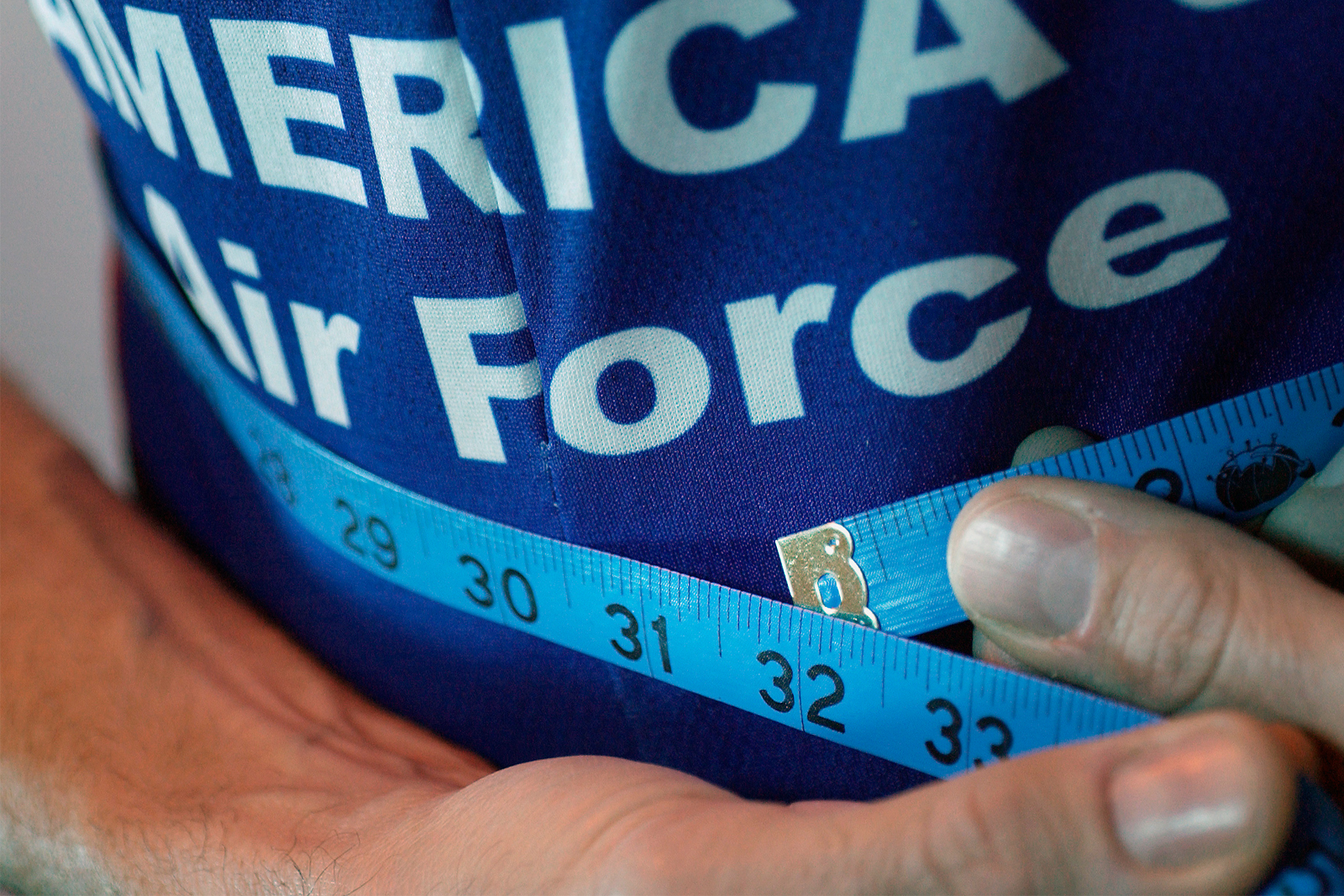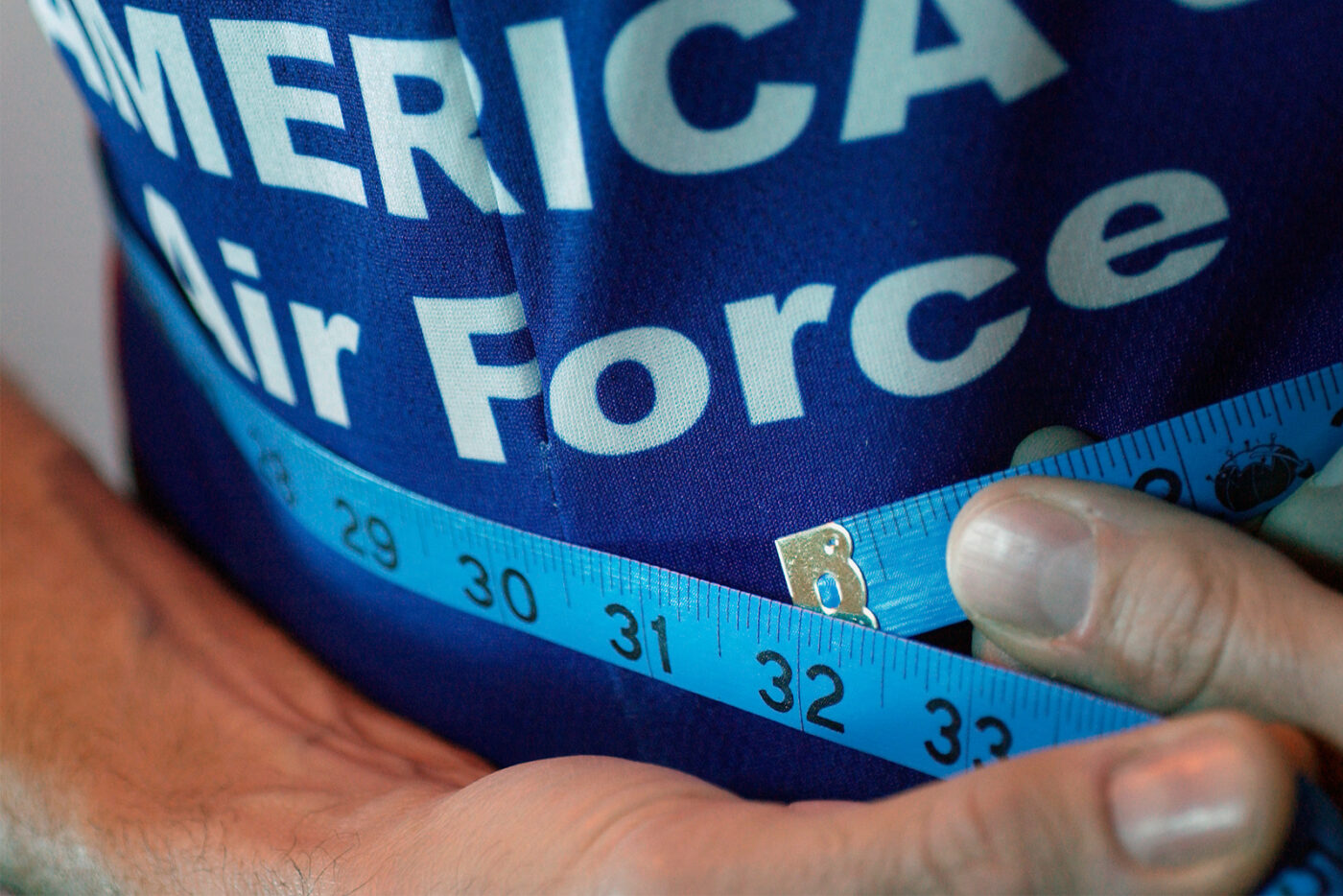Waisted Energy
30 inches is a lot of things …

Military members are required to have a heightened level of physical fitness, but twice a year, our physical fitness is assessed. For the Air Force, it’s a timed mile and a half run and as many push ups and sit ups as you can do in a minute.
Before all that happens, there is the favorite, let’s-see-how-snug-those-pants-really-are, waist measurement.
Combined with the official recording of your height and weight, the waist measurement is part of the formula to capture your body fat percentage.
There’s very little that’s pleasant about the biannual (not to be confused with a much more preferred “biennial”) physical training test. The waist measurement, however, is my least favorite as it can be a bit subjective … depending on the bearer of the measuring device, the measurerer(er).
As with all things military, there are instructions for the taking of the waist measurement. In fact, like all things military, you have to be qualified to be a waist measurement taker. In the waist measurement taker training you learn to completely remove the measuring tape from the body before taking each of the 3 separate measurements of the mid-body circumference. The average of the 3 measurements is entered in the body-fat gonculation.
The gonculator’s body-fat percentage is crucial. Being on the wrong side of the allowable cutoff could mean needing a waiver for continued service, or having to attend weight management classes, or being denied a promotion, or even being kindly ordered to seek employment elsewhere. All I’m saying is that most people dread the physical fitness test, but for those close to the “overweight” or “obese” body mass indices, it’s a significantly dreaded event.
I use the waist measurements as a benchmark of the impact of my caloric intake. I tried (past tense) to keep below a 30-inch waist when I was in the Air Force and as each year passed, I always felt more nervous that I was encroaching on that.
On the back half of my career, relegated to more sedentary, paper-pushing jobs and the biological decrease of my metabolic rate, the waist measurement aspect of the physical fitness assessment became more and more dreaded.
Today, the small, tight-knit, mostly-male unit of which I am the commander, is taking the physical fitness test. Before we head out to the track to run, push and sit up, we’re doing the body mass index measurements.
For some mathematical wizards, the “score” they get from the body fat percentage informs just how fast they have to run the mile and a half and/or how many push ups or sit ups they need to do.
As a nutritional wizard, the “score” I get from the body fat percentage simply informs how much celebratory pizza I can eat later.
Another aspect regulating the waist measurement (which you learn about in waist measurement taker training) is the gender of the waist measurer. The preference is for the measurer to be of the same sex, although this could be waived with verbal consent.
And issued as part of the waist measurement taker training is your very own measuring tape. It’s the kind of malleable plastic or cloth ruler you would see draped around the neck of a tailor or seamstress.
As the only female testing today, I verbally consent to have a male take my waist measurement.
No big deal.
No one can find the standard-issue, waist-measuring tape, so a resourceful, get-er-done member of the squadron comes out of the back shop with a measuring tape. It’s the kind of retractable metal bladed ruler you would see clipped on the belt of a carpenter or construction worker.
Minor deal.
I hoist up my shirt and expose my area to be measured. The male measurer wraps the cool, sharp-edged metal ruler around my midsection. Without uttering the first measurement, he snaps the button to loudly retract the stiff metal ruler to reset for the second measurement. Turns out he’s an internal processor, capable of holding 3 measurements silently in his memory.
Measurements 2 and 3 happen similarly and I’m anxious to know if I’ve managed to stay at or below my 30-inch goal.
Having already waived all sorts of standard procedures, my male measurer waives one more: discretion.
Typically the measurer writes down the waist circumference on the score sheet but today we have a separate recorder … on the other side of the room. And there’s no quiet or discreet way to pass off the information with that kind of formation. So my measurer yells my waist measurement to the recorder.
And I could have lived with that, maybe. But it was the number he sent across that startled me the most.
“TWO AND A HALF FEET!” he yelled.
Holy pizza slice!!!! Two and a half feet? How badly had I let myself go? I mean, things have felt a little snug around the waist, but two and a half feet???
The taste of frustration and disappointment starts consuming my body. Ironic penance for all the calories my body has consumed.
Immediately following that course is a platter of annoyance and impending reprimand. The dish of truth served by my waist measurer starves my ability to remain professional.
Keeping my mouth shut, I move aside so the next guy can get measured with the cold indiscriminate truth of the ruler.
Then I calculate the difference between two and half feet and 30 inches. The difference is: perspective, because two and a half feet is the same as 30 inches.
While I would have preferred hearing my waist measurement taker yell, “30 inches” across the room, there was nothing mathematically incorrect in his chosen articulation of how big around I was.
There are so many ways to present information in life. And there are different ways to express the same piece of information.
It’s better when we take the time to listen, think and check our perception before we react.
And when it comes to earning the celebratory pizza, it’s best to chew and digest before we spit out and judge.

